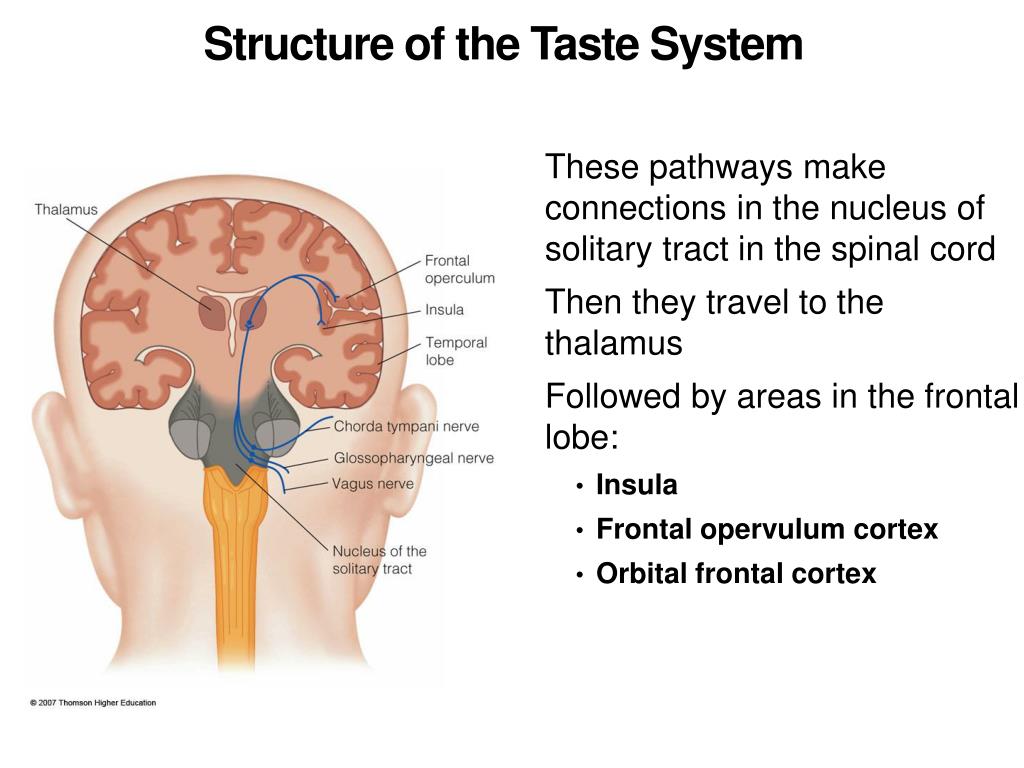SOLUTION Physiology of special senses taste and smell powerpoint Biology Diagrams Taste itself is focused on distinguishing chemicals that have a sweet, salty, sour, bitter, or umami taste (umami is Japanese for "savory"). However, interactions between the senses of taste and smell enhance our perceptions of the foods we eat. Tastants, chemicals in foods, are detected by taste buds, special structures embedded within Taste and smell work together and are hard to separate from each other, which is why holding your nose can sometimes reduce the nasty taste of a dose of medicine. Within each papilla are found a hundred or so taste buds; each of these taste buds comprises 30-100 taste receptor cells and basal cells. Basal cells are glia-like cells which provide

The sense of taste relies on well-defined neuroanatomical structures, namely, the taste buds and afferent nerve fibers. Taste buds are clusters of 50-100 neuroepithelial cells located throughout the oral cavity, including the epiglottis and larynx. They are responsible for the initial transduction p …

Anatomy and development of the human taste system Biology Diagrams
The sense of taste is only partly conveyed by the tongue.The sense of smell also has a significant role to play. Odorants, airborne odor molecules, are inhaled through the nose and make contact with the olfactory epithelium that is coated with a range of olfactory receptors found on olfactory cilia of sensory cells. These chemical signals are then transduced into electrical ones within the

Olfaction (Smell) Like taste, the sense of smell, or olfaction, is also responsive to chemical stimuli.Inhaled air containing odorant molecules (smells) enters the nasal cavity and passes by the nasal conchae. The olfactory receptor neurons (ORNs) are located in a small region within the superior nasal cavity (Figure \(\PageIndex{3}\)). This region is referred to as the olfactory epithelium

Taste and Smell Biology Diagrams
Taste is a chemical sense. The sensory experience is produced by stimulation of specific receptors in the oral cavity. The gross anatomy (peripheral and central nervous system) of taste, microscopic and ultrastructural morphology of taste buds, physiology of taste (modalities, distribution of taste sensations, electrophysiology of the receptors, mechanism and intensity of stimulation, and

